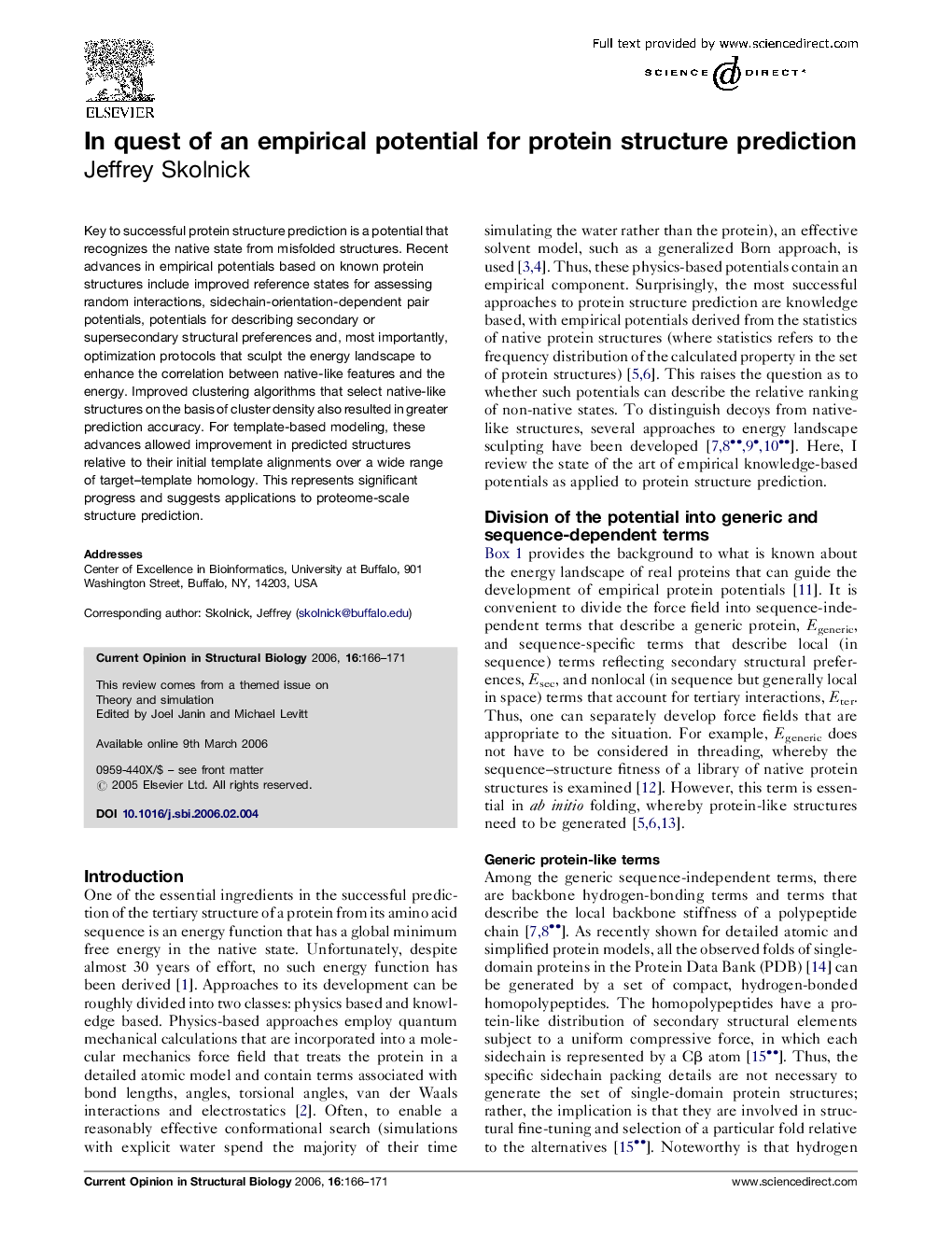| Article ID | Journal | Published Year | Pages | File Type |
|---|---|---|---|---|
| 1979921 | Current Opinion in Structural Biology | 2006 | 6 Pages |
Key to successful protein structure prediction is a potential that recognizes the native state from misfolded structures. Recent advances in empirical potentials based on known protein structures include improved reference states for assessing random interactions, sidechain-orientation-dependent pair potentials, potentials for describing secondary or supersecondary structural preferences and, most importantly, optimization protocols that sculpt the energy landscape to enhance the correlation between native-like features and the energy. Improved clustering algorithms that select native-like structures on the basis of cluster density also resulted in greater prediction accuracy. For template-based modeling, these advances allowed improvement in predicted structures relative to their initial template alignments over a wide range of target–template homology. This represents significant progress and suggests applications to proteome-scale structure prediction.
